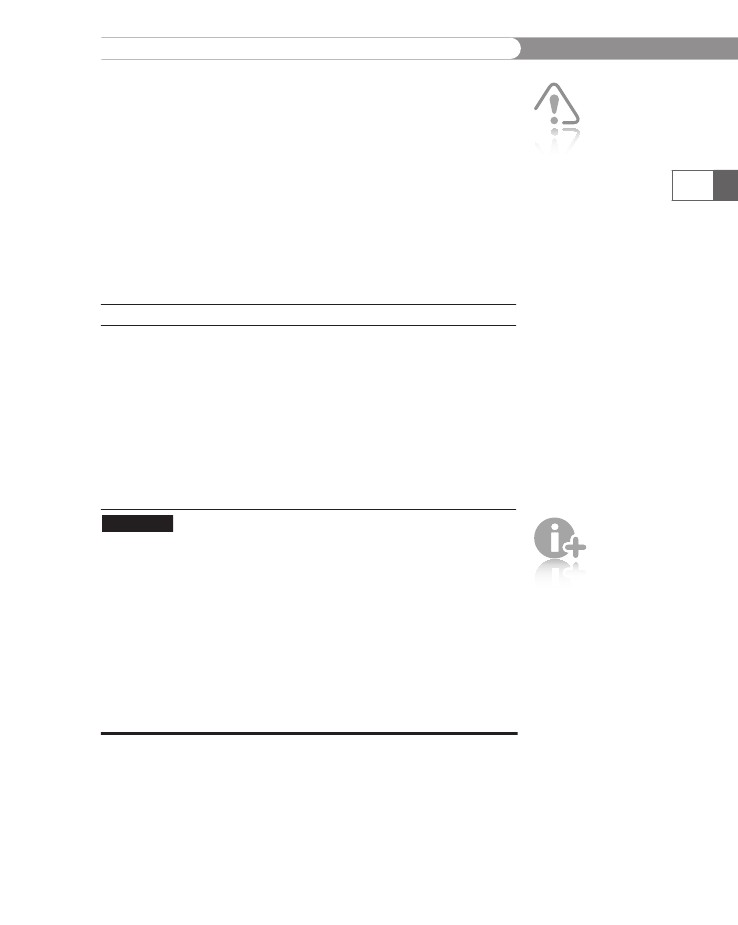
- •Initializing with Constructor Functions . . . . .
- •Into a Web page as a separate section. Although JavaScript code can
- •Is that standard php script delimiters are guaranteed to be available
- •In the block. Any text or lines between the opening /* characters and
- •2.7541 Are not integers; they are floating-point numbers. A floating-
- •Value 300
- •Is a value of 2.5, because 6 goes into 15 exactly 2.5 times. But if you
- •IsEven.Php.
- •Ing example,
- •Ing curly brace is on its own line following the function statements.
- •In php 3 and earlier, it was necessary to put a function definition
- •Is called an iteration. When the conditional expression evaluates
- •Including Files
- •13. Close your Web browser window.
- •Including Files
- •In php, you can also use two operators to combine strings. The first
- •Xhtml source code gen-
- •Input. Php provides several functions for manipulating the case of a
- •Is uppercase. If you need the reverse of ucfirst(), the lcfirst()
- •In some situations, you will need to find and extract characters and
- •Information Interchange, or ascii, which are numeric represen-
- •In comparison, the following preg_match() function returns a value
- •In the pattern is optional. The following code demonstrates how to
- •Values; any strings you validate against a regular expression must
- •Value of 1 because the top-level domain contains a valid value of .Com.
- •Is submitted using the “post” method, the form data is embedded in
- •Validating String Data
- •Xhtml tags or character entities. The message field is a text string
- •Value of the header element. For example:
- •Xhtml code within a php script section.
- •Is typically the person who created the resource. Otherwise, the net-
- •If even a single character of the Web page is sent prior to sending
- •Variables to the file_put_contents() function.
- •Xhtml hyperlink. To download a file from outside the xhtml
- •If...Else statement to display the appropriate version of the mes-
- •Iterating Through an Array
- •Iterating Through an Array
- •In Chapter 2, you learned how to use a foreach statement to iterate
- •Iterating Through an Array
- •Iterating Through an Array
- •In comparison, the following code declares and initializes
- •If ((!file_exists("MessageBoard/messages.Txt"))
- •Values from the array to create a thumbnail gallery of images in which
- •Introduction to Databases
- •Including php, allow you to create Web pages that can read and write
- •Introduction to Databases
- •Information that can be organized into ordered sets of data, and
- •Information. Each recipe in a recipe database, for instance, is a single
- •Introduction to Databases
- •Index, which identifies records in a database to make retrievals and
- •In a single table. However, you might want to break the information
- •Into multiple tables to better organize it into logical sets. Another
- •Information in one of the tables confidential and accessible only by
- •Is the employee information table from Figure 7-1. The related table
- •Is a payroll table that contains confidential salary and compensation
- •Information. Notice that each table contains an identical number of
- •Introduction to Databases
- •Introduction to Databases
- •In a junction
- •Introduction to Databases
- •In a relational format is called a relational database management
- •Is a standard data manipulation language among many dbmSs.
- •Into the query area at the top of the screen or by dragging tables and
- •It is important to understand that even though many dbmSs sup-
- •Introduction to Databases
- •If you ever
- •Is. In comparison, the bigint data type stores integer values between
- •5 Rows in set (0.00 sec)
- •Int);[enter ]
- •Important, these two tabs can cause you to lose all of the data in the
- •Internet Explorer to export the table, click the Save button in the File
- •Ifies the table being changed and the change to make.
- •It easier for you to write php code that can be used with a variety of
- •Information about queries that match one of the following formats:
- •Various types of actions, depending on the type of query.
- •Include fields for the date and time of the flight, flight number, and
- •In the ChineseZodiac folder and upload the file to the server. Open
- •Including white space,
- •Information on a Web server. When you start a new session, the
- •Introduction to Object-Oriented Programming
- •Introduction to Object-Oriented
- •Variables associated with an object are called properties or attributes.
- •In the Loan object example, a function that calculates the number of
- •Introduction to Object-Oriented Programming
- •Introduction to Object-Oriented Programming
- •Include instances of objects inherit the object’s functionality.
- •In this chapter, you will create the Web site for an online order form
- •In an online store application. The application includes information
- •Ity of building a working online store. Online store classes are very
- •Information and products. The OnlineStore class requires that store
- •Information is stored in a table containing six fields: storeId, name,
- •Information. Instead, the class simply uses session iDs to keep track
- •Variable and function as necessary, without bothering with all this
- •In a class
- •Is developed. Imagine what would happen if Microsoft distributed
- •Ing class is invalid because it does not include an access specifier:
- •If they will not be supported by future xhtml versions or are not
- •Xhtml standards. To review the guide of current w3c css specifi-
- •Information to remind yourself or others of what the code is doing. A
- •Xhtml document to the external style sheet. This link informa-
- •If you select Apache from the WampServer menu and select Service
- •Ing code uses the number_format() function to add comma separa-
- •In data that a user submits to a php script.
- •Value of “On” and the display_startup_errors directive is assigned
- •Instead. By looking at the source code, you could see that the value of
- •Ing engine can even help locate logic errors.
- •In Chapter 8, along with the equivalent mssql_* functions, where
- •Inline styles, 632
- •Xhtml, 620–635 (continued)
formats.
A DBMS that stores data in a flat-file format is called a
flat-file
database management system.
A DBMS that stores data
system,
or RDBMS.
Other types of DBMSs are hierarchical and net-
work
database management systems. In addition to the open source
MySQL
DBMS, some of the more popular relational DBMSs include
Oracle,
Sybase, and SQL Server for network servers, and Microsoft
Access
and Paradox for PCs.
Database
management systems perform many of the same functions
as
other types of applications you might have encountered, such as
word-processing
and spreadsheet programs. For example, a DBMS
creates
new database files and contains interfaces that allow users to
enter
and manipulate data. One of the most important functions of
a
DBMS is the structuring and maintenance of the database file. In
addition,
a DBMS must ensure that data is stored correctly in a data-
base’s
tables, regardless of the database format (flat-file, relational,
hierarchical,
or network). In relational databases, the DBMS ensures
that
the appropriate information is entered according to the relation-
ship
structure in the database tables. Many DBMSs also have security
features
that restrict user access to specific data.
Another
important aspect of a DBMS is its querying capability.
A
query
is
a structured set of instructions and criteria for retrieving,
adding,
modifying, and deleting database information. Most database
management
systems use a data
manipulation language,
or DML,
for
creating
queries. Different DBMSs support different DMLs. However,
structured
query language,
or SQL
(sometimes
pronounced sequel),
Many
DBMSs include tools that make it easier to build queries.
MySQL
includes MySQL Query Browser, a tool that allows you to
work
with MySQL queries in a graphical environment. You can use
MySQL
Query Browser to create queries by typing SQL commands
fields
from the Schemata area to the query area.
Although
working with an interface to design queries is helpful, you
must
still use the DBMS’s data manipulation language (for example,
when
accessing databases with PHP). Because SQL is the underlying
data
manipulation language for many DBMSs, including MySQL, you
will
learn more about the language as you progress through this chapter.
port
the same database structures (flat-file, relational, hierarchical,
or
network),
each DBMS is an individual application that creates its own
proprietary
file types. For example, even though Access and Paradox
are
both relational DBMSs, Access creates its database files in a
PostgreSQL
isIntroduction to Databases
In a relational format is called a relational database management
Is a standard data manipulation language among many dbmSs.
Into the query area at the top of the screen or by dragging tables and
It is important to understand that even though many dbmSs sup-
another open
source rela-
tional DBMS
that is becom-
ing a popular alternative
to MySQL. You can find
more information on
PostgreSQL at http://
www.postgresql.org/.
389
Many DBMSs
also use
a data
definition
language,
or DDL, for creating
databases, tables, fields,
and other database
components.

CHAPTER
7
Working
with Databases and MySQL
390
proprietary
format with an .accdb extension (.mdb for Access 2003
and
earlier), whereas Paradox creates a set of database files in a
differ-
ent
proprietary format, with the data stored in files with a .db exten-
sion.
Although both Paradox and Access contain filters that allow you
to
import the other’s file formats, the database files are not
completely
interchangeable
between the two programs. The same is true for most
DBMSs;
they can import each other’s file formats, but they cannot
directly
read each other’s files.
In
today’s ever-evolving technology environment, an application
must
often access multiple databases created in different DBMSs.
For
example, a company might need a PHP script that simultane-
ously
accesses a large legacy database written in Sybase and a newer
database
written in Oracle. Converting the large Sybase database to
Oracle
would be cost prohibitive. On the other hand, the company
cannot
continue using the older Sybase database exclusively because
its
needs have grown beyond the older database’s capabilities. So, the
company
must be able to access the data in both systems.
To
allow easy access to data in various database formats, Microsoft
established
the Open
Database Connectivity standard
(ODBC).
ODBC
allows compliant applications to access any data source for
which
there is an ODBC driver. ODBC uses SQL commands (known
as
ODBC SQL) to allow an ODBC-compliant application to access
a
database. Essentially, an ODBC application connects to a database
for
which there is an ODBC driver and then executes ODBC SQL
commands.
Then, the ODBC driver translates the SQL commands
into
a format that the database can understand. PHP includes strong
support
for ODBC, and includes functionality that allows you to
work
directly with different types of databases without going through
ODBC.
Some of the databases that you can access directly from PHP
include
Oracle, Informix, MySQL, and PostgreSQL. By eliminating
the
ODBC layer, your PHP scripts will be faster. Furthermore, PHP
code
that directly accesses a database allows you to access proprietary
DBMS
functions that are not supported by ODBC. Therefore, your
rule
of thumb should be to always use direct database access if it is
available
in PHP. Otherwise, use PHP’s ODBC functionality to access
ODBC-compliant
databases.
In
Chapter 8,
you will learn
how to use
PHP to
access
MySQL databases
directly.
Querying Databases with Structured Query
Language (SQL)
Programmers at IBM developed SQL in the 1970s as a way to query
databases for specific criteria. Since then, SQL has been adopted by
numerous DBMSs running on mainframes, minicomputers, and PCs.
In 1986, the American National Standards Institute (ANSI) approved

